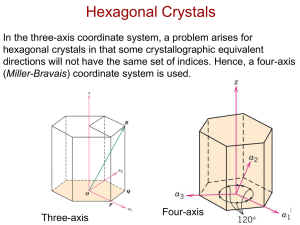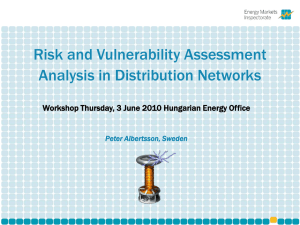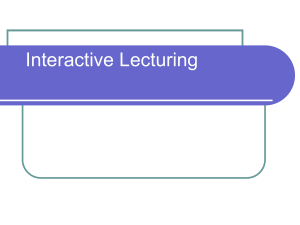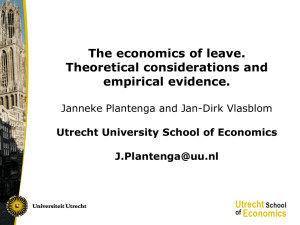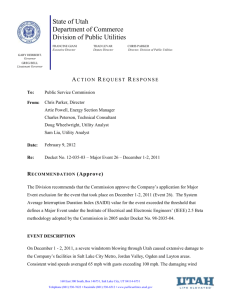Power supply quality
advertisement
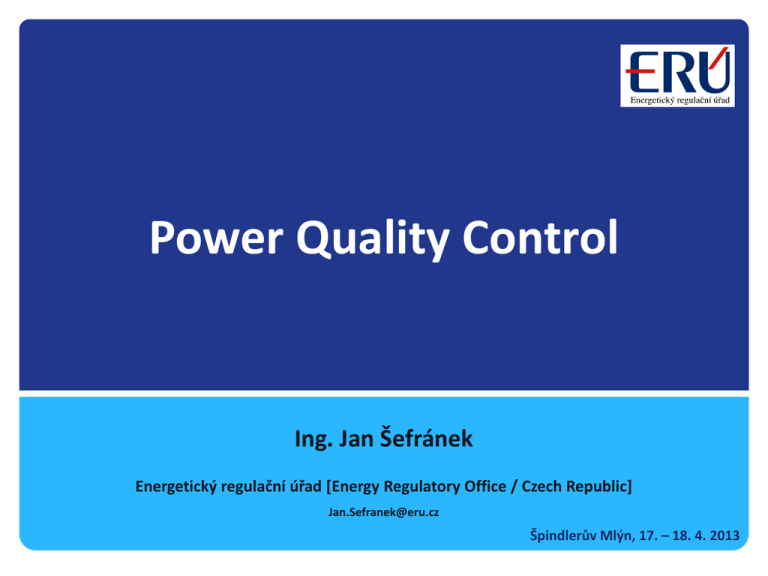
Power Quality Control Ing. Jan Šefránek Energetický regulační úřad [Energy Regulatory Office / Czech Republic] Jan.Sefranek@eru.cz Špindlerův Mlýn, 17. – 18. 4. 2013 Power supply quality The quality of power supply and services has been defined by the Regulation of ERÚ No. 540/2005 Sb., on power supply quality and related services in power industry, as amended, which stipulates: •Required power supply quality and additional services related to regulatory activities in power industry (standards), •Amount of compensation for non-observance of prescribed standards, •Terms for determination of financial compensation, •Procedures for proving the compliance of power quality and services [with standards] Claiming of compensation: Compensation for non-observance of standards should be claimed by customer within 60 calendar days: •for non-observance of the guaranteed standard of distribution at that DSO to which respective customer is connected, •for non-observance of the guaranteed standard of supply at that supplier which supplies power to customer in accordance with respective contract. 2 Power supply quality Standards define the level of quality which must be attained in each individual case. Standards can be divided into two main groups: a) Standards for power transmission or distribution •The first part contains the information related to the continuity of power supply in grids, i.e. the data influenced by fault events or planned events in operated distribution grids. •The second part contains standards related to the commercial quality which characterises the ability of power distributor or producer to respond to applicable requirements of end customers; such quality is not directly related to the physical operation of systems. b) Standards for power supply 3 Evaluation of continuity level The Regulation of ERÚ as mentioned above represents also the basis for monitoring and evaluation of Power Transmission / Distribution System Continuity Level. Power transmission indices: Average power transmission interruption duration – in the evaluated year), Energy Not Supplied (ENS). Power distribution indices: System Average Interruption Frequency Index (SAIFI = Average number of interruptions that a customer would experience - in the evaluated period), System Average Interruption Duration Index (SAIDI = Average outage duration for each customer served - in the evaluated period), Customer Average Interruption Duration Index (CAIDI = Sum of all customer interruption durations divided by Total number of customer interruptions - in the evaluated period) CAIDI = SAIDI / SAIFI 4 Evaluation of power transmission continuity Indices of continuity in 2012: Number of power transmission interruptions in 2012 [-] 1 Total power transmission interruption duration in 2012 [min] 4 Average power transmission interruption duration in 2012 [min] 4 Energy Not Supplied in 2012 [MWh] 4,5 Development of indices: Average power transmission interruption duration (min) Energy Not Supplied (MWh) 5 Evaluation of power distribution continuity It is hardly possible to compare DSOs in a simple way; it is always important to take their profiles in consideration. Profiles of DSOs in the Czech Republic : Company profiles ČEZ Distribuce E.ON Distribuce PREdistribuce Total Czech Republic Number of customers [-] Length of cable lines [km] Length of overhead lines [km] LV 3 519 281 50 677 47 962 43 332 HV 14 393 9 777 40 131 293 VHV 296 13 9 707 231 LV 1 480 810 22 902 16 838 18 301 HV 8 339 3 533 18 630 109 VHV 41 6 2 391 6 LV 747 566 7 756 80 4 008 HV 1 942 3 746 117 288 VHV 5 58 144 0 LV 5 747 657 81 335 64 880 65 641 HV 24 674 17 056 58 878 690 VHV 342 77 12 242 237 Voltage levels Number of transformers [-] 6 Evaluation of power distribution continuity Profiles of distribution companies: Total length of lines (km) Proportion of cable lines (%) Cable lines Overhead lines Cable lines Overhead lines 7 Evaluation of power distribution continuity Indices of continuity in 2011: Index* SAIFI [interruptions/yr] ČEZ Distribuce E.ON Distribuce PREdistribuce Česká republika 2,88 2,00 0,65 2,36 SAIDI [min/yr] 296,70 314,40 46,79 268,82 CAIDI [min] 103,15 157,26 72,13 113,87 System indices which include all sorts of interruption according to Appendix No. 4 to the Regulation No. 540/2005 Sb. Development of indices of continuity: 8 Evaluation of power distribution continuity Structure of power distribution continuity indices at LV (nn) level in 2011: Scheduled interruptions Non-scheduled interruptions : Pink: Fault-related interruptions under normal weather conditions: 9 Comparison of power quality level in EU Comparison of power supply quality is quite difficult and often misleading. It is always necessary to take in consideration specific aspects in respective countries, such as the character of grids, mode of grid operation (proportion of cable lines, length of cable outlets, age of grids, etc.), geographic and natural conditions and also historical experience with quality monitoring and purpose of power quality control in respective countries. Power supply continuity can be evaluated using indices which may not be identical in respective countries. The most often used indices, also in the Czech Republic, are SAIFI and SAIDI which are related to the number of customers affected by long-term power distribution interruptions. However, even the methods for calculation of indices are not unified and this aspect should be taken in consideration when comparing actual values – it is important which categories of interruption are involved in relevant indices (see e.g. the differences in Austria, Germany, etc.). 10 Comparison of power quality level in EU • Dominant impact on continuity indices has the proportion of cable lines, namely at the HV level. Proportion of cable lines at the LV (NN) and HV (VN) levels 11 Comparison of power quality level in EU • Index SAIFI – non-scheduled interruptions without extraordinary events 12 Comparison of power quality level in EU • Index SAIDI – non-scheduled interruptions without extraordinary events. 13 Comparison of power quality level in EU • Index SAIFI – scheduled interruptions 14 Comparison of power quality level in EU • Index SAIDI – scheduled interruptions 15 Motivational quality control • The Regulation on power quality and related standards is aimed at the protection of the most vulnerable customers, namely through the limits which define the level of quality which is to be achieved in each individual case. • On the other hand, the goal of Motivational quality control is to influence the power quality in the whole system; in this particular case in a distribution system. The aim is to reduce the number and time of power distribution interruptions. This relates especially to the category of scheduled interruptions which are not restricted by legislation, even if they represent the most frequent subject of customer complaints. Another goal is the gradual unification of power supply quality throughout the Czech Republic, as the Czech customers pay now comparable power distribution fees for different power quality. The last but not least goal of the Regulation is the achievement of better results in the process of comparing power quality levels with other EU countries. The combination of these two mechanisms should ensure the gradual improvement of power supply quality for all customers in the Czech Republic. 16 Motivational quality control In 2012, ERÚ as the Regulator determined the quality indices and respective parameters (the values of such indices) for 2013 for the area of power distribution. This results from the Report of ERÚ on the methodology of regulation for the Third regulation period which introduces the concept of Motivational quality control with its main goal which is to set the required level of quality for provided services in relation to their prices. Any bonus or penalty shall be related to the amount of profit determined by ERÚ for respective period (year) of regulation. Required values of indices SAIFI and SAIDI for 2013 have been determined on the basis of available data from previous periods, such values include further reduction by approx. 5 % (depending on respective company and indices). Such Indices are specifically whole-system continuity indices as defined by the Regulation No. 540/2005 Sb., without taking in consideration those events which happened without any influence of respective Distribution System Operator. 17 Motivational quality control Detailed definitions of respective indices: 18 Motivational quality control Diagram of motivational quality control: Standard value of Standardní hodnota quality index ukazatele kvality Bonus STQ ΔPVmax gradient ofpřímky line CKCK– –směrnice Achieved level of Dosažená úroveň quality index ukazatele kvality Lower Nižšíquality kvalita DUQmin DUQ Vyšší kvalita Higher quality DHNP Neutral zone Neutrální pásmo HHNP DUQmax ΔPVt ΔPVmin Penalty Penále 19 Performance/Quality index rating for 2013 Setting of required values of indices SAIFI and SAIDI for 2013: The values of parameters for the regulation period [year] 2013 have been set on the basis of detailed evaluation of available data of ERÚ according to the capabilities of individual Distribution System Operators. This relates in particular to the whole-system continuity indices SAIFI and SAIDI as defined by the Regulation No. 540/2005 Sb., without taking in consideration those events which happened without any influence of respective Distribution System Operator. The events which will not be included in the required values of indices for 2013 are in particular the following interruptions: faulty interruptions caused by any fault with the origin in the equipment or operation of any transmission or distribution system operator under unfavourable weather conditions (16), faulty interruptions caused by any interference or action of a third person (12), forced interruptions (15), extraordinary interruptions (14), interruptions caused by events from outside (out of TS or DS) or events in power generation units (13). 20 Performance/Quality index rating for 2013 Values required for 2013 and tentatively also for the next period(s): ČEZ Distribuce - SAIFI: required value 2,36 tolerance zone ±5% max. bonus/penalty ± 15 % (Value of interannual decrease) 6% 21 Performance/Quality index rating for 2013 ČEZ Distribuce - SAIDI: required value 262,70 tolerance zone ±5% max. bonus/penalty ± 15 % (Value of interannual decrease) 5% 22 Performance/Quality index rating for 2013 E.ON Distribuce - SAIFI: required value 1,57 tolerance zone ±5% max. bonus/penalty ± 15 % (Value of interannual decrease) 4% 23 Performance/Quality index rating for 2013 E.ON Distribuce - SAIDI: required value 275,36 tolerance zone ±5% max. bonus/penalty ± 15 % (Value of interannual decrease) 6% 24 Performance/Quality index rating for 2013 PREdistribuce - SAIFI: required value 0,44 tolerance zone ±5% max. bonus/penalty ± 15 % (Value of interannual decrease) 5% 25 Performance/Quality index rating for 2013 PREdistribuce - SAIDI: required value 37,37 tolerance zone ±5% max. bonus/penalty ± 15 % (Value of interannual decrease) 5% 26 Performance/Quality index rating for the period until 2020 A principal and necessary step for the functioning of Motivational quality control in practice is the definition of required goals of the Regulator (ERÚ), i.e. the determination of attainable level of power supply quality in a short-term horizon. It is essential for this step to elaborate a study which would determine the relation between potential measures for [desirable] decrease of values of respective indices (SAIFI, SAIDI) and expenses of individual Distribution System Operators. Based on conclusions of such study, it would be possible to revise the set of required tentative parameters (values) of indices SAIFI and SAIDI in the period until 2020. To get a longer time series of such parameters, it would be possible to use the averaging of values of such indices within e.g. three-year cycles to eliminate their possible oscillation in individual years. A working group of representatives of ERÚ and DSOs was created in 2012 to deal with these issues. 27 Thank you for your attention... 28

